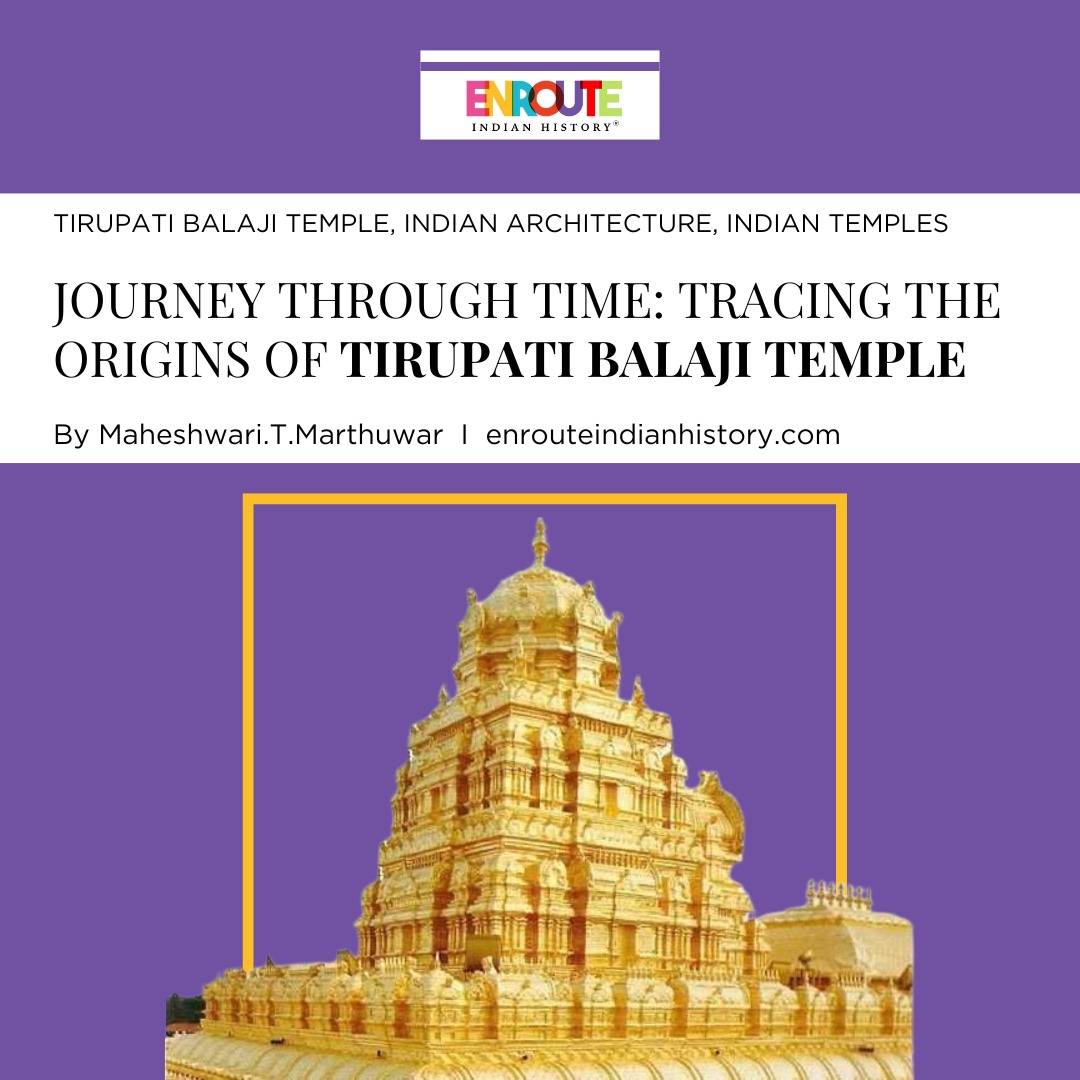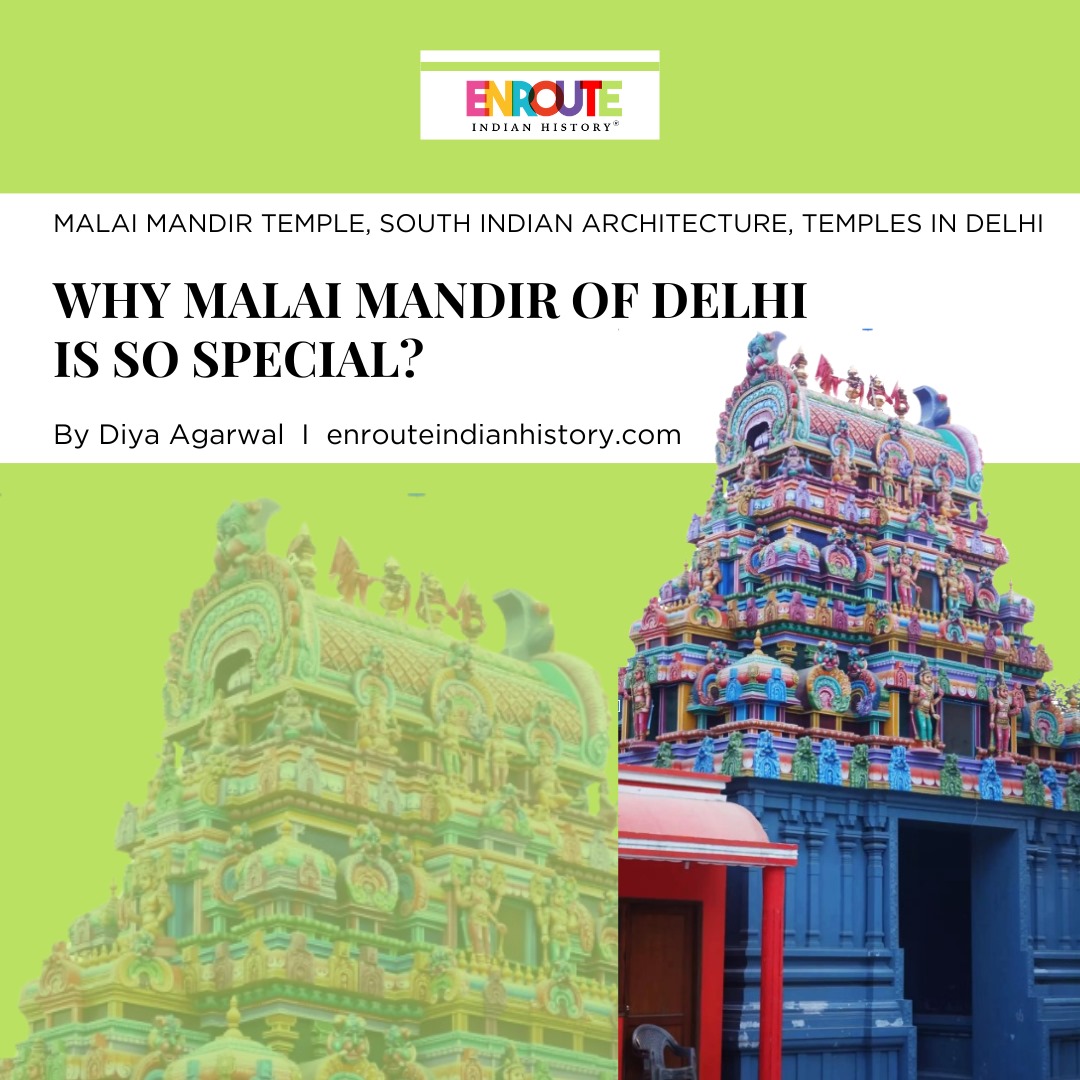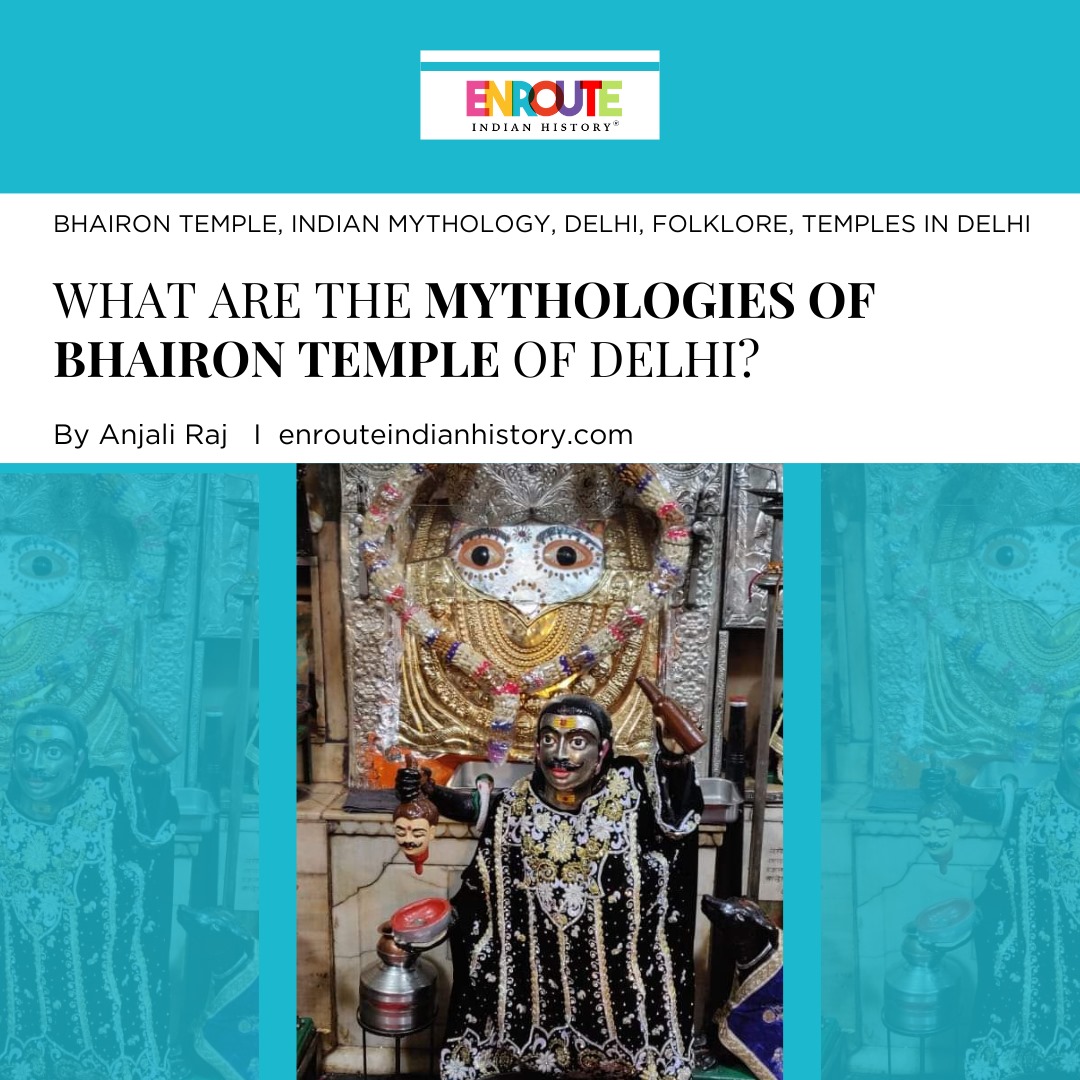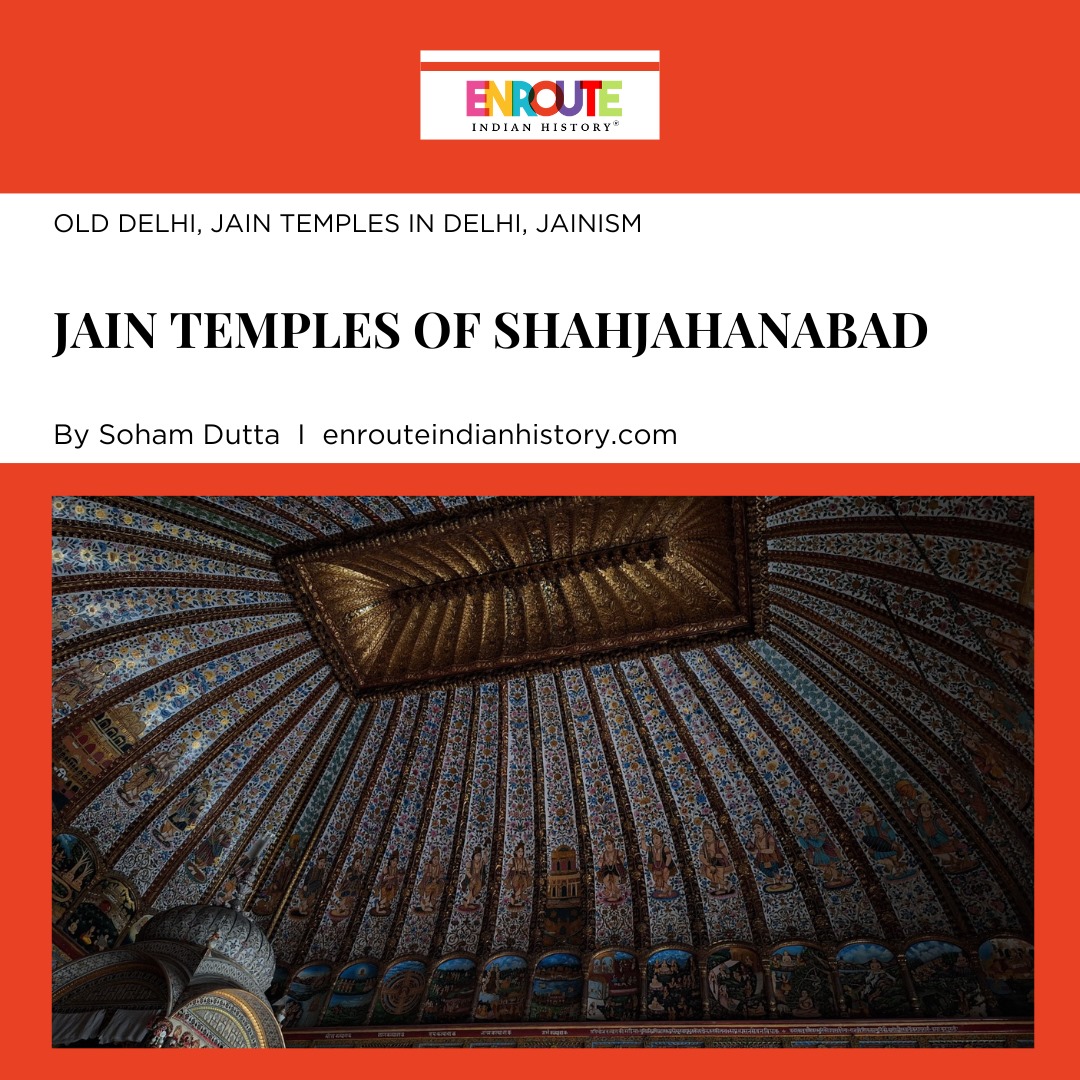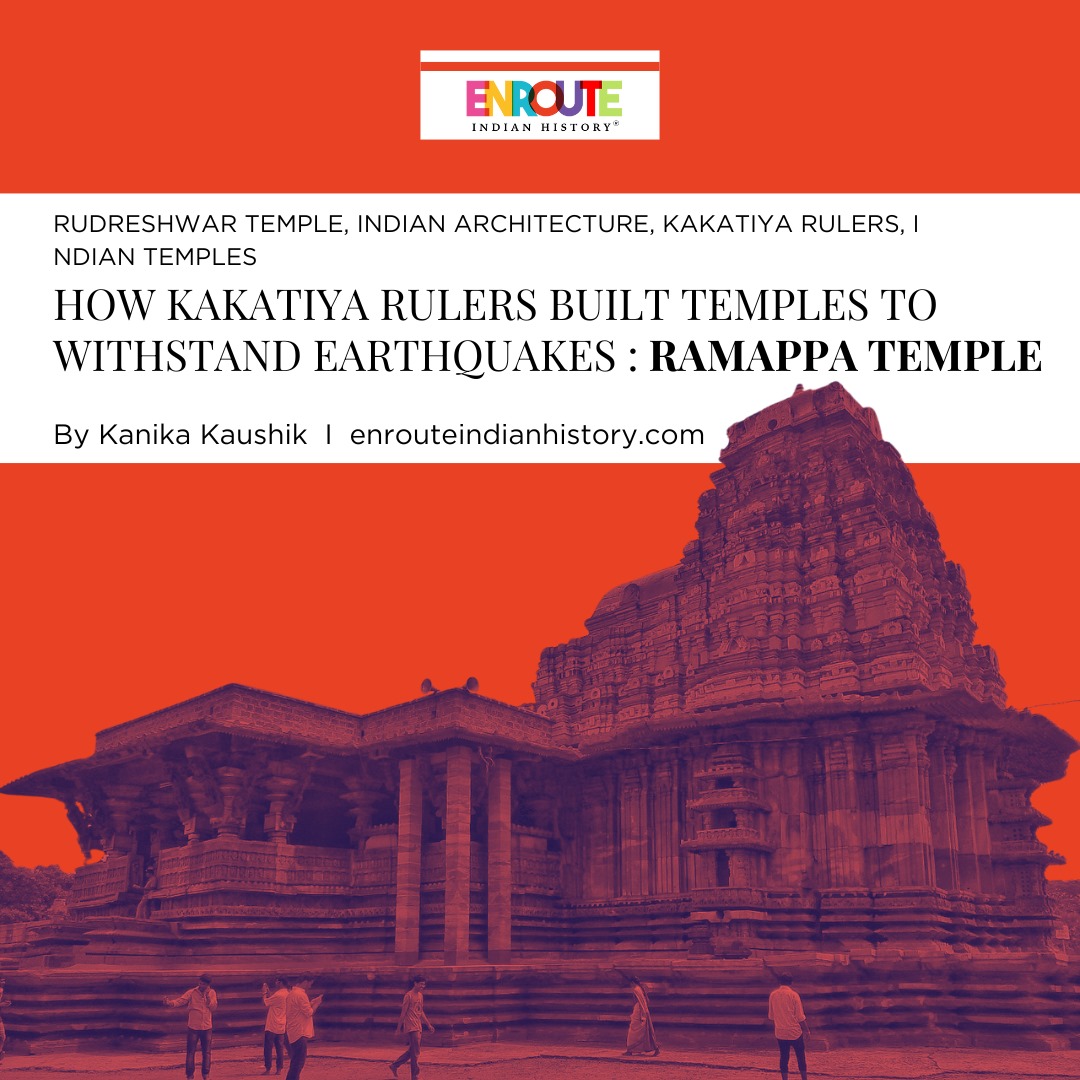Eid Mubarak: A Creative Look at Famous Sweet Dishes during the Festive Season in India
- enrouteI
- April 10, 2024
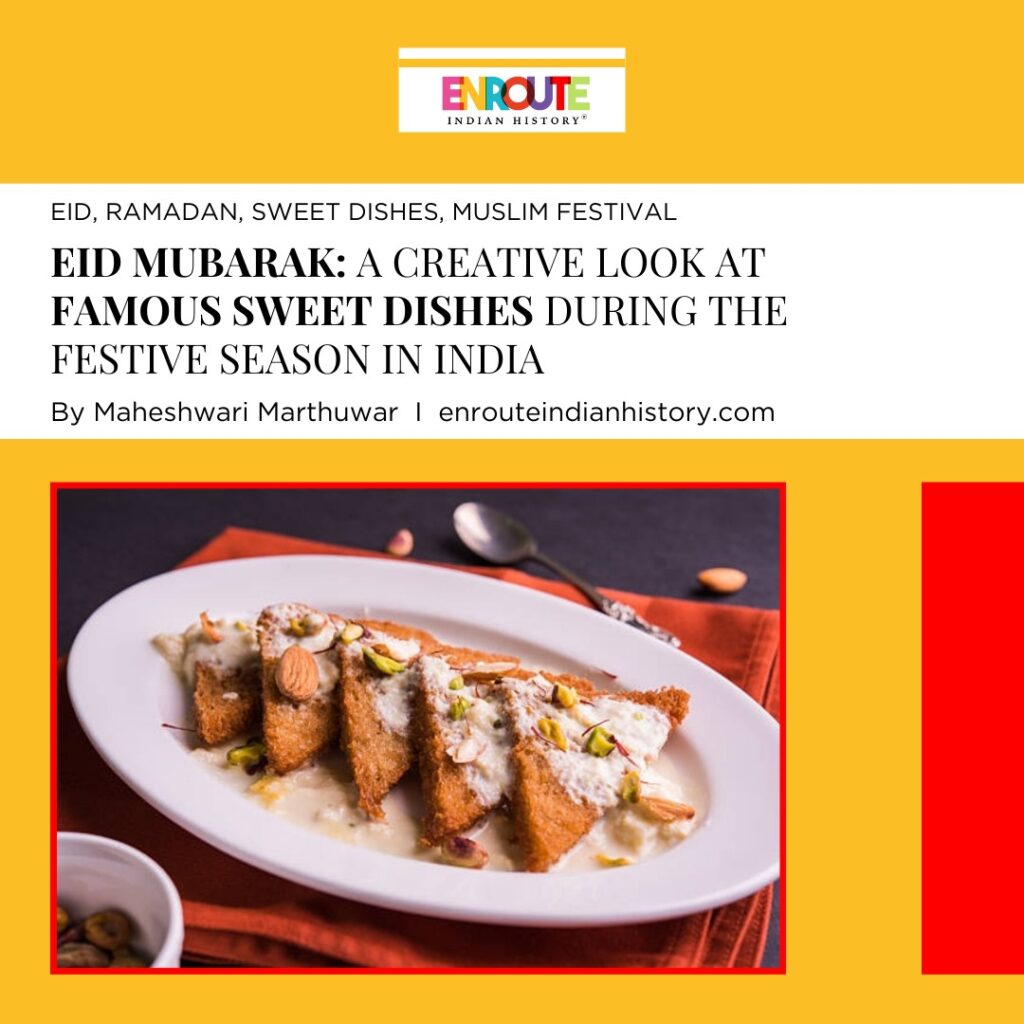
“Eid Al-Fitr, also known as ‘Meethi Eid’, is almost here. As the name suggests, this festival is all about sweet treats. There are many delicious desserts that are traditionally enjoyed during Eid, such as Phirni and Sheer Khurma.”
The holy month of Ramzan is currently underway and in just a few days, Muslims festivals around the world will celebrate Eid Al-Fitr, also known as ‘Meethi Eid’ or the sweet festival. It is believed that the Holy Quran was first revealed to Prophet Muhammad during the month of Ramadan. “Overall, Meethi Eid is a celebration of religion, appreciation, and community, and it has enormous cultural and religious significance for Muslims worldwide,” Sarcar added. This significant occasion marks the conclusion of the sacred month of Ramadan and the beginning of Shawwal month. Muslims eagerly anticipate this festival, as it is a time for exchanging wishes, coming together as a community, offering prayers, and indulging in a grand and delectable feast. During Eid, children receive blessings and gifts, known as Eidi, from their elders as a token of love and affection.
It is a common misconception to categorise Mughal-influenced dishes as a singular entity and associate them solely with Muslim food. However, the reality is that Muslim cuisine in India is a reflection of the country’s incredible diversity. There are numerous influences that contribute to the tapestry of Muslim cuisine, with rich and exotic flavours from the Arab and Persian world intertwining with local culinary traditions and indigenous ingredients. This amalgamation of influences is beautifully exemplified in the Eid sweets platter, where a variety of delectable treats are presented, each infused with the delightful sweetness of sugar and honey.
Festivals are often accompanied by a delightful array of food, and Eid is no exception. The Eid feast is a culinary extravaganza featuring a variety of mouthwatering dishes such as biryani, kebabs, haleem, tikkas, korma, and much more! However, the indulgence doesn’t stop there. When it comes to desserts, the options are plentiful and absolutely delicious. Traditional Eid sweet desserts are a treat for the taste buds, offering a wide range of flavours and textures. From creamy kheer to syrup-soaked jalebis, from fragrant sheer khurma to crispy baklava, the list of sweet delights is extensive and guaranteed to satisfy any sweet tooth. So, let us take you on a delightful journey through some of these traditional Eid sweets desserts that you can savour and enjoy during this festive season.
Special foods for Meethi Eid
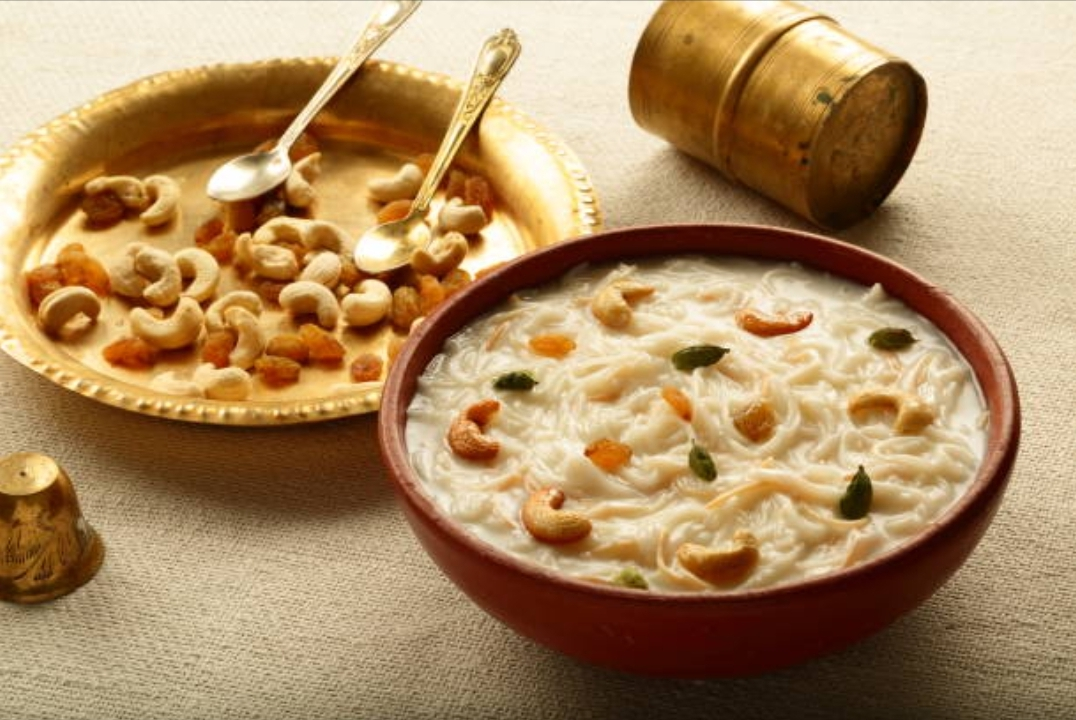
Sheer Khurma
Sheer Khurma is a traditional dessert that is closely associated with the celebration of Eid. Also known as sweet vermicelli or meethi sevaiyan, this delectable dish is a must-have during the festive season. The name “Sheer Khurma” translates to “milk with dates” in Persian, which perfectly describes the main ingredients of this pudding. It is made by simmering milk with vermicelli, dates, and a variety of nuts. The result is a rich and creamy dessert that is often considered the denser version of seviyan. Muslims typically enjoy Sheer Khurma as their first meal after offering their first namaz on Eid, adding to the significance and joy of the occasion.
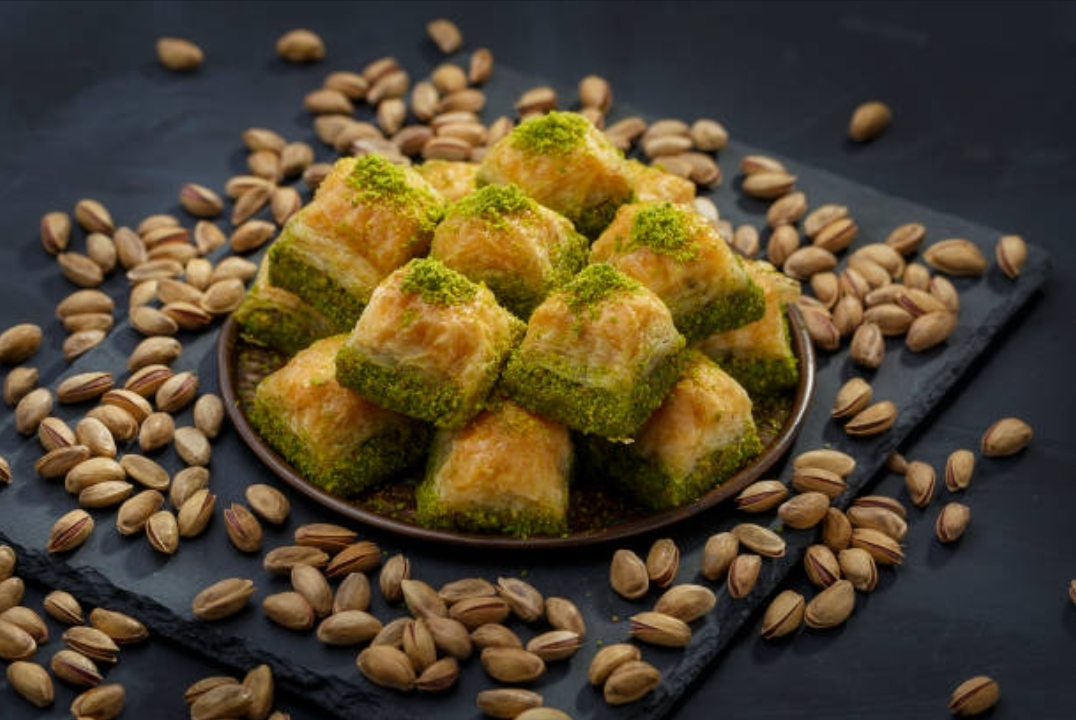
Turkish Baklava
Turkish Baklava is a beloved dessert that hails from Turkey. This sweet treat consists of layers of delicate filo pastry that are generously brushed with pure butter and sprinkled with finely chopped nuts, particularly pistachios. The pastry is then baked to perfection and soaked in a fragrant rose sugar syrup. The combination of the flaky pastry, buttery richness, and crunchy nuts creates a truly delightful dessert that is loved by many. The aroma and taste of Turkish Baklava make it a popular choice for special occasions, including Eid celebrations.
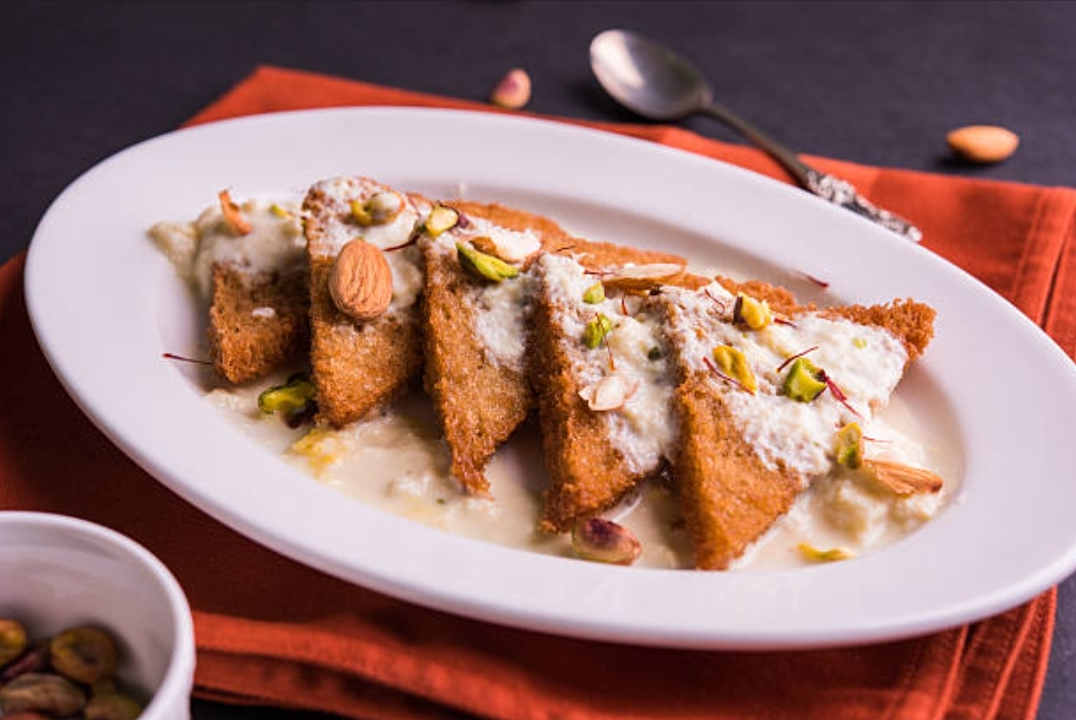
Shahi Tukda
Shahi Tukda is a dessert that showcases the richness of ghee, milk, and dry fruits. This indulgent sweet dish features bread pieces that are fried in ghee until golden and crispy. The fried bread is then dipped in a luscious mixture of cardamom and saffron-infused condensed milk, which is further enhanced with the addition of various dry fruits. Shahi Tukda has a royal history and was often served as part of the Mughal emperors’ feasts. It is similar to another popular dessert called Double ka Meetha, which is enjoyed in the regions of Telangana and Andhra Pradesh. The main difference between the two lies in the thickness of the bread used.
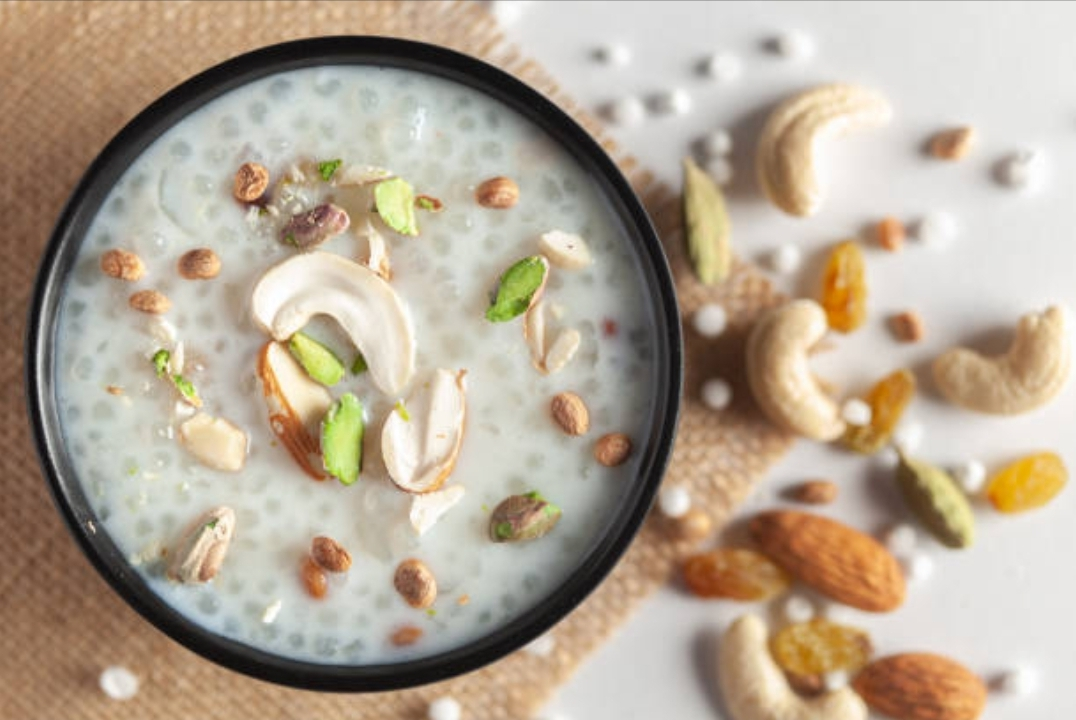
Phirni
Phirni is a delightful dessert that can be considered the cousin of kheer. It is made by combining milk, ground rice, cardamom, rose water, saffron, and a variety of nuts. Unlike kheer, which uses whole rice grains, phirni is prepared using ground rice, resulting in a smoother and creamier texture. This dessert is commonly prepared in many regions during Eid and is often served in clay vessels, adding a rustic touch too.
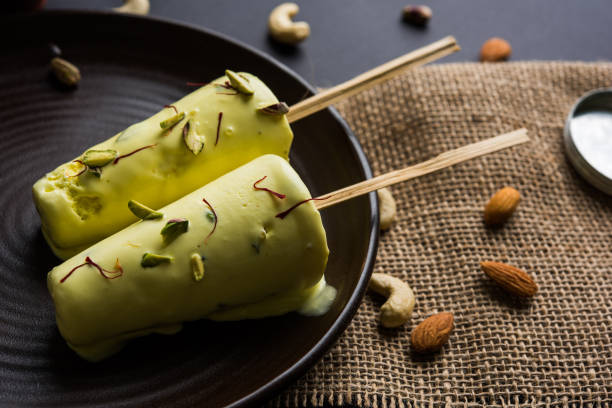
Faluda Kulfi
Faluda Kulfi, a combination of kulfi and faluda, is a popular dessert enjoyed during Eid and throughout the summer months. Kulfi, a dense and nutty frozen dessert, is enhanced with the addition of faluda, creating a delightful and satisfying treat. This dessert is not only delicious but also easy to make, making it a favourite among those looking for a sweet and refreshing indulgence.
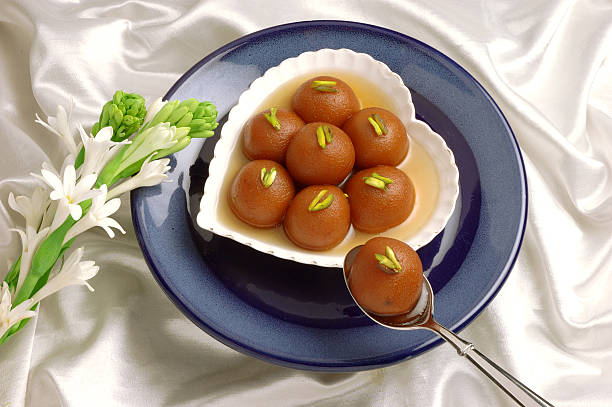
Gulab Jamun
Another favorite among sweet dishes during Eid is the quintessential Gulab Jamun. These deep-fried dough balls soaked in syrup are an all-time favorite among Indians during the festive season. It is believed that Gulab Jamuns were first introduced in India by Mughal emperors. Over the years, it has become an integral part of Eid celebrations, with every household having their own unique way of making this delectable dessert.
Seviyan, a traditional dessert enjoyed during Eid festivities, has a long history that traces back to Persia or India. Throughout the centuries, it has spread to various Islamic countries and has been modified to cater to local preferences. Among the different variations of seviyan, the Seviyan Kheer stands out as one of the most popular during Eid. Although the exact origins of this dish remain uncertain, it has gained global recognition.
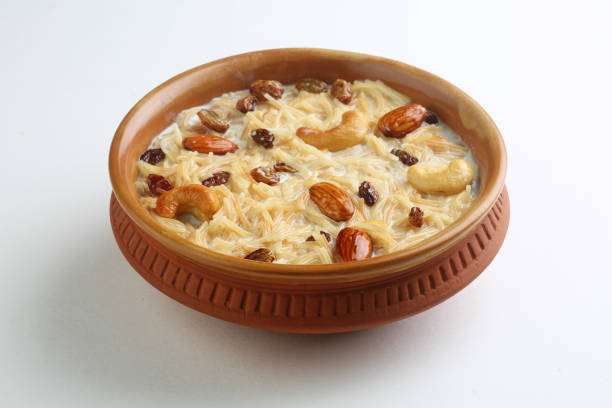
Seviyan
In India, during the reign of the Mughals, seviyan underwent several transformations. The most decadent version, known as “Dum ki Meethi Seviyan”, involved the laborious process of hand-rolling seviyan, followed by roasting them in ghee and enhancing the flavour with jaggery and rose syrup. To add richness, khoya was incorporated before smoking the seviyan on a griddle. Emperor Shah Jahan even went as far as ordering a special coloured varq to accompany the seviyan offering during Eid celebrations. The tradition of hand-rolling seviyan persisted until the time of Bahadur Shah Zafar, who personally crafted his own seviyan using soft wheat dough during fasting days.
In India, Seviyan or vermicelli is a versatile ingredient used to prepare a wide range of dishes, both sweet and savory. One of the most popular sweet dishes made with Seviyan is Seviyan Kheer. This classic dessert involves roasting the Seviyan and then cooking it in milk, flavored with sugar, cardamom, and nuts. It is particularly enjoyed during Eid celebrations. On the other hand, Seviyan Upma is a savory dish made by cooking roasted Seviyan with onions, tomatoes, and spices. It is a popular breakfast option in South India. Another delicious preparation is Seviyan Pulao, which combines roasted Seviyan with rice, vegetables, and spices. This dish is commonly enjoyed during festivals and special occasions. For those who prefer a vegetarian version of the traditional biryani, Seviyan Biryani is a flavorful option. It includes roasted Seviyan, rice, vegetables, and spices. Additionally, there is Seviyan Kheer with Jaggery, which offers a healthier twist to the classic Seviyan Kheer by using jaggery instead of sugar. Lastly, Meethi Seviyan is a rich dessert made with roasted Seviyan, milk, khoya, sugar, and nuts. It is a popular choice during festivals and special occasions. These examples highlight the diverse ways in which Seviyan is used across different regions of India to create a variety of delectable dishes.
The method of cooking halwa is believed to have originated in the Ottoman Empire between 1520-1566. The term “halwa” is derived from the Arabic word ‘Halw’, which translates to ‘something sweet’. When it comes to desserts, one cannot overlook the traditional halwa. While you may have heard of unconventional variations like lauki ka halwa or kaddu ka halwa, have you ever encountered Ande Ka Halwa, also known as Dimer Halwa in Bangla.

Ande Ka Halwa
At first, the idea of Ande Ka Halwa may not sound appealing, but once you indulge in a bite of this incredible delicacy, you will find yourself craving for more. Among all the halwas, this particular one stands out due to its numerous health benefits and high protein content. It is often prepared during the winter season as it provides warmth to the body. Although the exact origins of this dessert remain unknown, it is commonly associated with India, Pakistani and Bangladeshi cuisine. This dessert is also referred to as ‘Ande Ka Meetha’, which translates to a sweet dish made with eggs. It is highly recommended to try this dish during the popular Muslim festivals of ‘Shab-e-Barat’ and ‘Ramadan’ as part of the iftar meal.
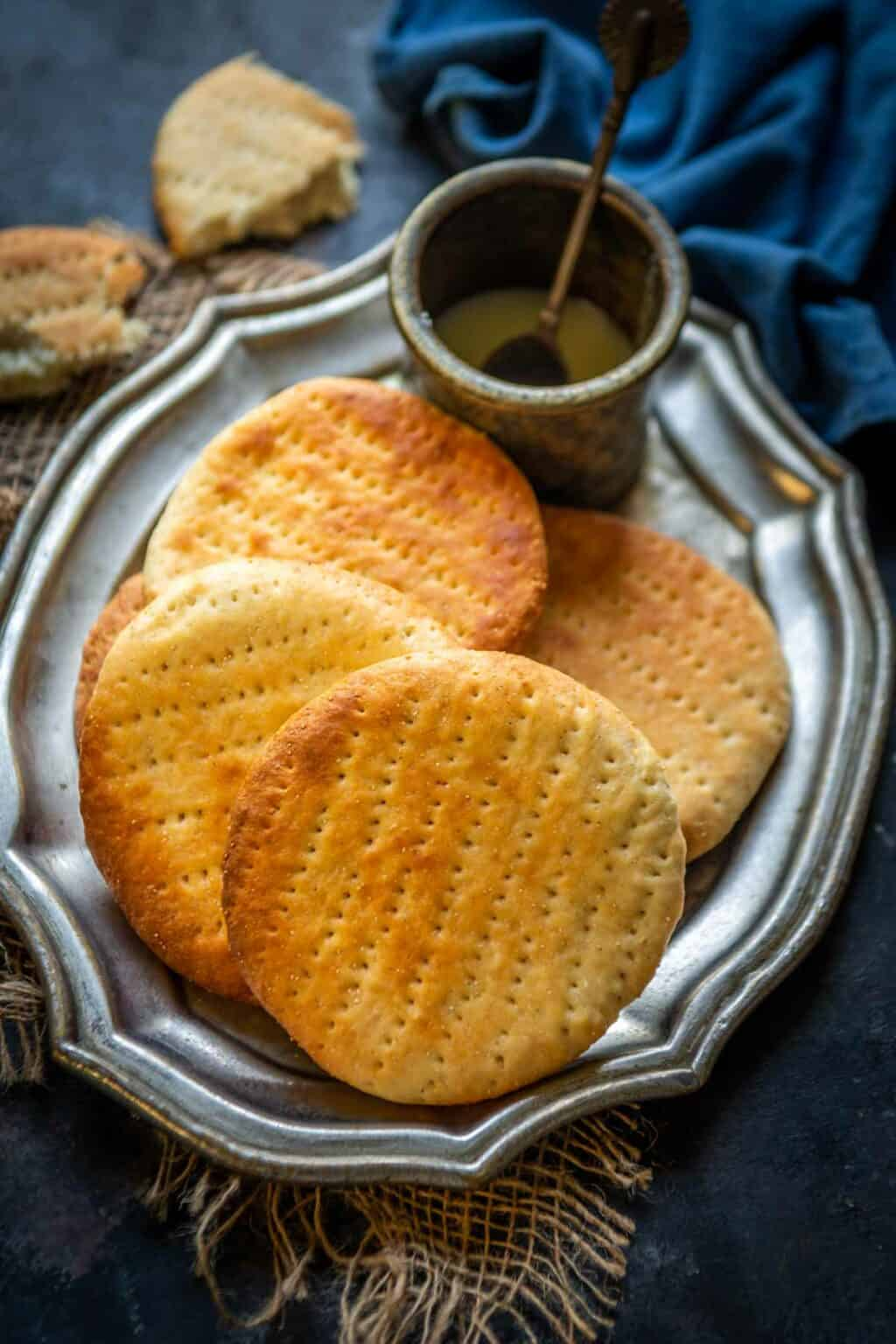
Bakarkhani
Bakarkhani is a delightful treat that holds a special place during the festive occasion of Eidul Fitr. This delectable bread is crafted using a combination of flour, dry fruits, and mawa, which lends it a unique and rich flavor. Traditionally, it is baked in a tandoor or oven, resulting in a perfectly crisp and golden exterior. To enhance its visual appeal, a generous assortment of dry fruits is artfully arranged on top. Bakarkhani is not only cherished in its place of origin, but it has also gained immense popularity in the cities of Lucknow and Hyderabad. Known for its sweetness, this delicacy pairs exceptionally well with a glass of milk, making it a delightful treat for all. Furthermore, its light and easily digestible nature add to its appeal, making it a favorite among many.
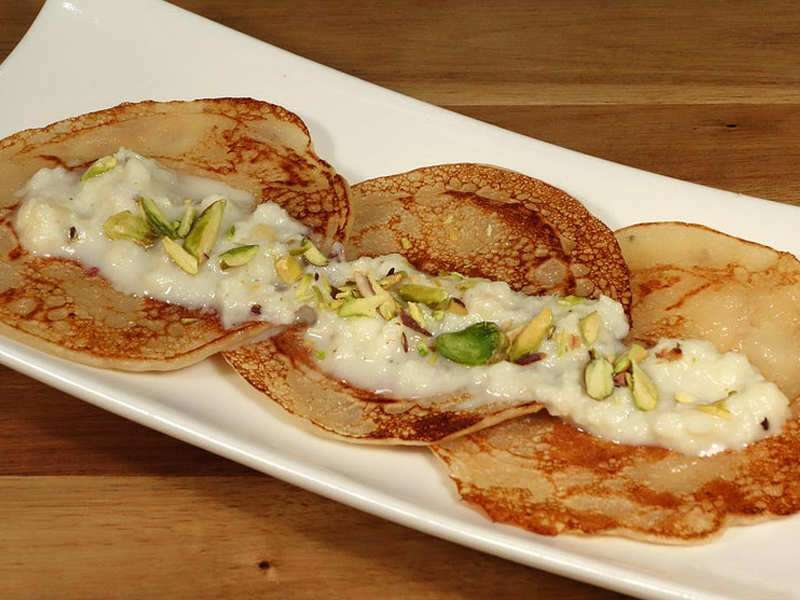
Malpua Or Apupa
Malpua, a delectable deep-fried pancake soaked in sugary syrup, holds a significant place in Indian cuisine as one of the oldest and most beloved desserts. Its origins can be traced back to the Rigveda, an ancient Vedic text dating back approximately 5000 years. During that time, this delightful treat was known as ‘Apupa’ and was crafted using barley flour. These flat cakes were fried in ghee and then immersed in honey before being served. Over the years, the recipe for Apupa has undergone several transformations, but the traditional method of preparation has remained unchanged. Historical literature from the second century CE sheds light on the evolution of Apupa into Malpua. During this period, Apupa was made using wheat flour, milk, clarified butter, sugar, and a blend of aromatic spices such as cardamom, pepper, and ginger. Additionally, there were variations of Apupa known as ‘Pupalika,’ which were small cakes made from rice or wheat, fried in ghee, and filled with jaggery. Stuffed Apupas with diverse fillings were also popular during this era. The cultural influences and scientific experiments over time led to the transformation of Apupa into Malpua. Islamic cuisines introduced the addition of eggs and mawa (reduced milk solids), which further enhanced the flavors of this delectable dessert. In recent times, Malpuas made with refined flour have gained popularity and are served as a delightful dessert or snack. In Bihar, sugar is commonly added to the batter before frying it in refined oil or ghee. For the ultimate Malpua experience, visit Harilal’s, the renowned sweet shop in Patna, where you can savor the finest Malpuas. In certain regions, the batter for Malpua is prepared by mashing ripe bananas or coconut and then incorporating flour, water, or milk into it. This variation adds a unique twist to the traditional recipe, resulting in a delightful fusion of flavors. To truly relish the flavors of Malpua, it is best served piping hot with a generous topping of rabdi (thickened sweetened milk) or fresh cream. For an added touch of elegance, chopped pistachios are often used to garnish the cakes, enhancing both the visual appeal and taste of this beloved Indian dessert.

Zardah or Zarda Pulao
A dessert that has gained popularity in northern India is the Zardah or Zarda Pulao, a decadent dish reminiscent of The Arabian Nights. According to US-based food historian and journalist Charles Perry, in his essay Food of ‘The Arabian Nights’, the “Yellow Rice” mentioned in The Tale of Mercury Ali of Cairo is Zardah, a sweet rice dish that is infused with the vibrant colors of saffron or turmeric. The Zardah prepared during Eid is not just a simple colored rice dish it is a luxurious delicacy filled with an assortment of dried fruits and nuts, and delicately scented with rose water.

Mutanjan
A more opulent variation of the Zardah is a dish known as Mutanjan. This dish boasts a rich history and, intriguingly, The 13th century collection of allegorical tales by Sufi poet Amir Khusrau, Bagh-o-Bahar (also referred to as Qissa Chahar Dervesh), describes mutanjan as a concoction made with rice, meat – particularly kid meat, sugar, clarified butter, and occasionally pineapples or nuts. Chef Mohsin Qureshi reminisces, “In Lucknow, mutanjan was once an essential dish on the table of a connoisseur during Eid,” as he introduces this nearly forgotten recipe to the menu at Lebua Lucknow. Chef Qureshi’s mutanjan features a blend of fragrant saffron-infused rice grains and tender sweetened meat, garnished with cashews, raisins, almonds, makhana (fox nuts), khoya (a milk product), and varq (silver leaf).

Sanna.

Patolio
Regional delicacies made from locally sourced ingredients are a common sight on the dining table during Eid celebrations. In Goa, for example, dishes like Sanna (sweet rice cakes fermented with toddy) and Patolio (a blend of rice, coconut, and jaggery steamed in leaves) are not only enjoyed during Eid but are also integral to Hindu and Christian festivities.

Mahalabiya
Furthermore, many Muslims in Goa also prepare Mahalabiya, a milk pudding with origins in West Asia, which is known for its delicate flavor enhanced by rose essence. This diverse array of traditional treats reflects the cultural fusion and culinary richness that characterises Eid celebrations in different regions. The use of local ingredients and traditional recipes not only adds a unique touch to the festivities but also showcases the culinary heritage of the community.

Doodh Lachhi
The Konkan coast of Maharashtra is known for its Muslim community that prepares delectable sweets using ingredients like purple yam, bottle gourd, and bananas. These sweets are further enhanced with the addition of dried fruits, nuts, and saffron, resulting in a rich and flavorful treat. On the other hand, Bengal also has its own array of Eid sweets that are highly cherished. Food blogger Debjani Chatterjee Alam, who is married into a Muslim family from Bengal’s Birbhum district, highlights the popularity of sweet treats such as “doodh lachhi” which consists of vermicelli cooked in sweetened milk, and “pua” which are deep-fried pancakes made with milk, flour, eggs, and sugar. Additionally, Bengal and Assam also indulge in the delightful “pitha,” which are rice cakes filled with sweet stuffing. Kolkata, in particular, is known for its irresistible firni, a creamy rice pudding that is an essential part of every Eid celebration. Furthermore, households in Bengal prepare a variety of sweet halwas using lentils, poppy seeds, and eggs, adding to the festive spirit of Eid.
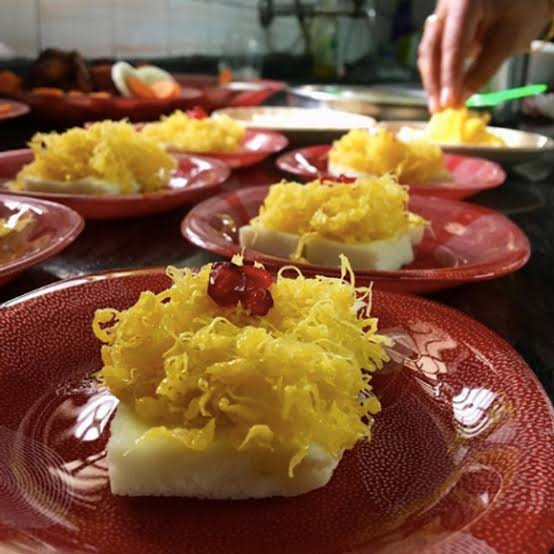
Muttamaala
In bakeries across Kerala, a captivating sight awaits during certain times of the year. Delicate strands resembling golden-colored noodles are elegantly arranged on a pristine marble-like base. Known as Muttamaala, this exquisite dish holds a special place in the hearts of the people of Malabar. Its name, which translates to ‘egg chain’ or ‘egg necklace’, reflects the unique ingredients and preparation method. The origins of Muttamaala can be traced back to Kozhikode, a bustling port city on the Malabar coast. This city, once frequented by ships from China, Portugal, West Asia, and Africa, witnessed the arrival of the renowned Portuguese explorer Vasco da Gama in 1498. His arrival marked the beginning of a vibrant era of trade, cultural exchange, and exploration. As the explorers, traders, missionaries, and mercenaries arrived, they brought with them not only goods but also their culinary traditions. One fascinating story surrounding Muttamaala suggests that Portuguese nuns, who starched their habits with egg whites, discovered a creative way to utilize the leftover egg yolks. They ingeniously incorporated them into the preparation of Muttamaala, known as Fio de Ovos in Portuguese. This delightful dish is a testament to the rich history and diverse influences that have shaped the culinary landscape of Malabar.

Vattalappam
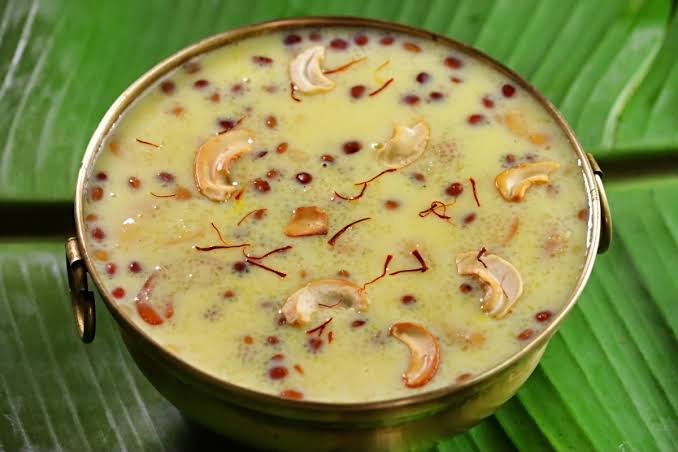
Javvarisi Payasam
In the neighboring state of Tamil Nadu, Muslim communities such as the Labbai or Ravuthars also boast a wide array of traditional sweets that are popular during Eid celebrations. One such delicacy is the vattalappam, a spiced coconut custard that is typically made using coconut milk, eggs, and either jaggery or sugar. This delectable dessert, which has its origins in Malay cuisine, comes in various versions across Tamil Nadu and Sri Lanka. The Vattalappam is particularly cherished in Thanjavur, where the first extract of coconut milk is used to achieve the most exquisite flavor and texture. However, in some regions, this custard is prepared using regular dairy milk as well. According to Faizunnisa, a local expert, vattalappam has a long shelf life and can be stored in the refrigerator for several weeks, making it a convenient treat for festive occasions. Another popular sweet dish enjoyed during Eid festivities is Thengai Paal Javvarisi Payasam, a type of kheer that is made with coconut milk and sago. Additionally, in districts like Tiruchi and Thanjavur, Jaalar Vada, which are lattice pancakes filled with chicken, are a savoury delight that adds a unique touch to the culinary traditions of the region.
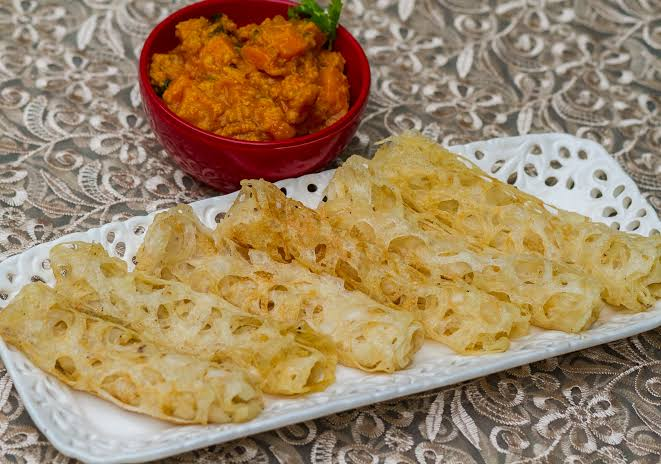
Jaalar Vada.
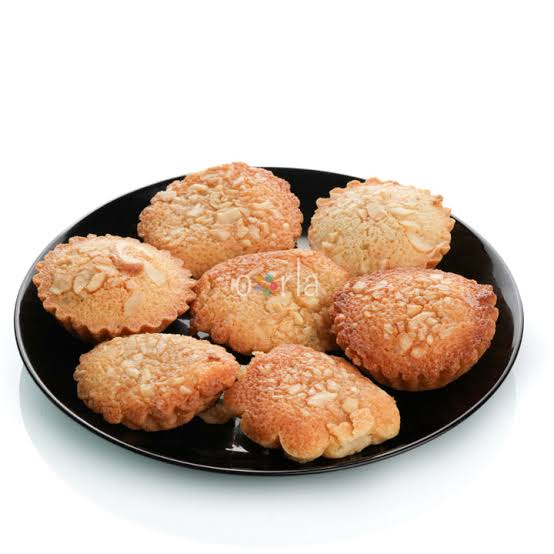
Dum Adai
The traditional Muslim cuisine in Kayalapattinam, known for its rich flavors and unique dishes, showcases the importance of coconut milk in Dum Adai, a delightful sweet treat resembling mini cakes. This speciality is often prepared alongside a heavy breakfast of non-vegetarian curries and Idiyappam, followed by Javvarusi Payasam after the Eid prayers, creating a festive and indulgent dining experience for both residents and visitors alike.
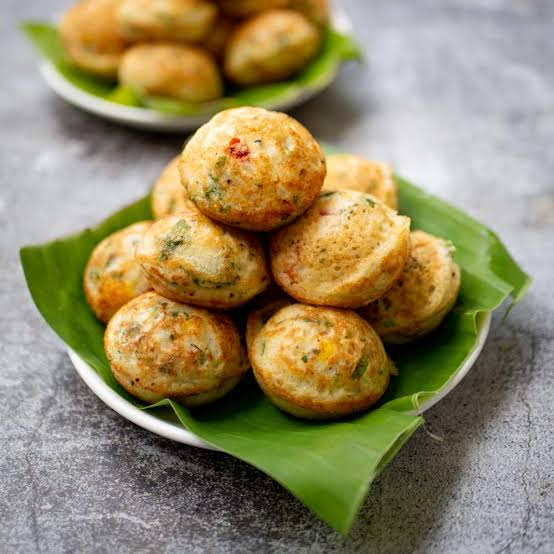
Muttai Paniyaram
While the availability of modern sweets like baklava and kunafa in local shops has introduced new flavors to the culinary scene, the essence of home-cooked meals remains strong. Recipes like Muttai Paniyaram, a fried doughnut-like treat made with rice flour, eggs, sugar, and semolina, highlight the creativity and experimentation of home cooks who continue to preserve traditional cooking methods and flavors.
Despite the convenience of modern food options, the time-honored recipes that require coconut milk and hours of soaking hold a special place in the hearts of many. These dishes, including Dum Adai, serve as a reminder of the rich culinary heritage and cultural significance of Muslim cuisine in Kayalapattinam, offering a taste of nostalgia and tradition in every bite.
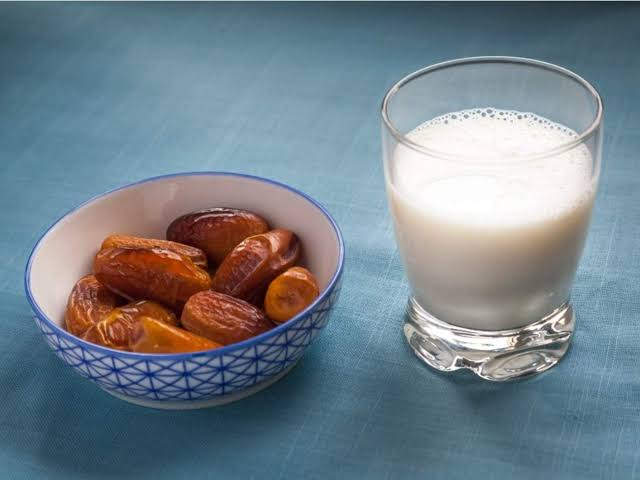
Chwara Doodh
Family traditions play a significant role in shaping the culinary experiences of individuals, adding a personal touch and an element of intrigue to food stories. One such example is shared by Indian-born British chef and restaurateur Asma Khan, who highlights the unique tradition of preparing chwara doodh, a special Eid dish, at her maternal grandmother’s home in Bakhtiyarpur, Bihar. Khan describes the elaborate process involved in making Chwara Doodh, where dates are soaked on Chaand Raat, the night of the sighting of the Moon during Eid, and left overnight. The following morning, these soaked dates are combined with thickened, sweetened milk, which is then slowly reduced to perfection. This tradition, passed down through generations, continues to be practiced today, showcasing the rich cultural heritage and culinary customs that are deeply ingrained in family rituals. The preparation of Chwara Doodh not only reflects the flavors and ingredients of the dish but also symbolizes the importance of preserving and celebrating unique family traditions that contribute to the richness of food stories.
Other popular sweet dishes that are enjoyed during Eid include sheer khurma ice cream, which is a modern twist on the traditional sheer khurma, and shahi tukda, which is a popular dessert made with bread, sugar syrup, and milk.
One interesting fact about these sweet dishes is that they have variations in different regions of India. For example, in North India, seviyan kheer is often made with condensed milk, while in South India, it is made with coconut milk. In Bihar, a dessert called balushahi, a crispy deep-fried dough ball dipped in sugar syrup, is a popular choice during Eid. Similarly, different regions have their own unique way of making phirni and gulab jamun.
During Eid, families and friends come together to share these sweet dishes and celebrate the festival of togetherness and brotherhood. It is a time to forget differences and embrace the spirit of love and unity. The joy of preparing and sharing these sweet dishes is an integral part of the festivities. Women in households spend hours in the kitchen, preparing these delicacies with love and care, while men gather around to enjoy the delicious treats.
In today’s modern society, people are becoming more health-conscious, and many families try to incorporate healthier versions of these traditional sweet dishes. With the use of ingredients like jaggery, honey, and almond milk, healthier versions of sheer khurma, seviyan kheer, and phirni have become popular choices among health-conscious individuals.

Eid Mubarak is not only a festival of prayer and reflection but also a time to indulge in delicious sweet dishes with loved ones. The above-mentioned dishes are just a few of the many famous sweet delicacies enjoyed during Eid in India. These dishes not only have a rich cultural significance but also bring people together to celebrate the joy and spirit of the festival. So, this Eid, let us savour these sweet treats and spread love and happiness with our friends and family. Eid Mubarak!.
Reference
- Ahuja Aditi, When Is Eid-Al-Fitr? Significance Of ‘Meethi Eid’ And 5 Special Dessert Recipes, NDTV Food Article, 17th April 2023.
- Ande ka Halwa: The quintessential Muslim dessert and why it’s a winter specialty, Times Of India, 7th June 2022.
- Chatterjee Priyadarshini, The Indian Eid feast goes beyond biryani and sevaiyan, Mint Lounge Article, 4th May 2020.
- Bhopal: Traditional Recipes & Fusion Food Mark Celebrations This ‘Mithi Eid’, Times Of India Article, 6th June 2019.
- Eid Ul-Fitr Recipes: ईद उल-फ़ित्र पर बनते हैं ये खास पकवान, अभी नोट करें रेसिपी, Webdunia Article, Access On 3rd April 2024.
- Malpuas’ history, Article Access On 5th April 2024.
- Nagarjuna Saraswathy, How the Portuguese introduced the signature dish of Muttamaala to Malabar, The Hindu News Article, 14th April 2023.
- Nahshon, Eid Mubarak! Celebrate Eid With Special Seviyan Recipe, 2nd April 2023.
- Nainar Nahla, Celebrate Eid al-Fitr with these traditional southern Indian delicacies, The Hindu Article, 21st April 2023, Photos Collected.
- Photo Access On IstockPhoto.
- April 25, 2024
- 25 Min Read
- April 25, 2024
- 14 Min Read
- April 25, 2024
- 6 Min Read


